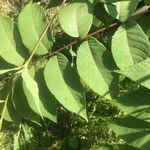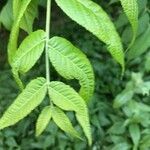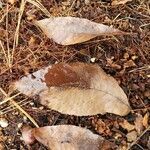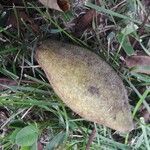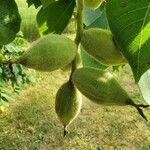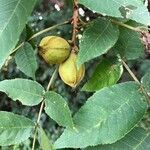A small to medium sized deciduous tree. They grow 25 m tall. The trunk can be 75 cm across. The leaves are alternate and with 11-17 leaflets. They are on a stout, short, hairy central stalk. The leaf is 30-60 cm long. They are yellowish-green and rough above and paler and more densely hairy underneath. They are sticky when young. The side leaflets get progressively smaller towards the base. The leaves are golden yellow in autumn. The flowers are separately male and female. The male pollen flowers are in catkins 6-14 cm long. The female or seed flowers are in erect clusters of 4-7. The fruit are 5-8 cm long. They occur in drooping clusters of 1-5. The fruit are nuts which are small and oblong. They are light coloured and deeply ridged. The kernel is sweet and oily.
Tree to 30 m; bark grayish-brown, with smooth ridges; pith dark brown; a dense pad of short hairs often present long the upper margin of old lf-scars; lfls 11–17, oblong-lanceolate, acuminate; pubescence, especially of the lower lf-surface, largely or wholly of stellate, few-rayed hairs; fr ovoid-oblong, 4–7 cm, somewhat pointed; nut ovoid to short-cylindric, longer than thick, very rough, marked with 2 or4 obscure longitudinal ridges. Rich, moist soil; N.B. to Minn., s. to S.C., Ga., and Ark. (Wallia c.)
